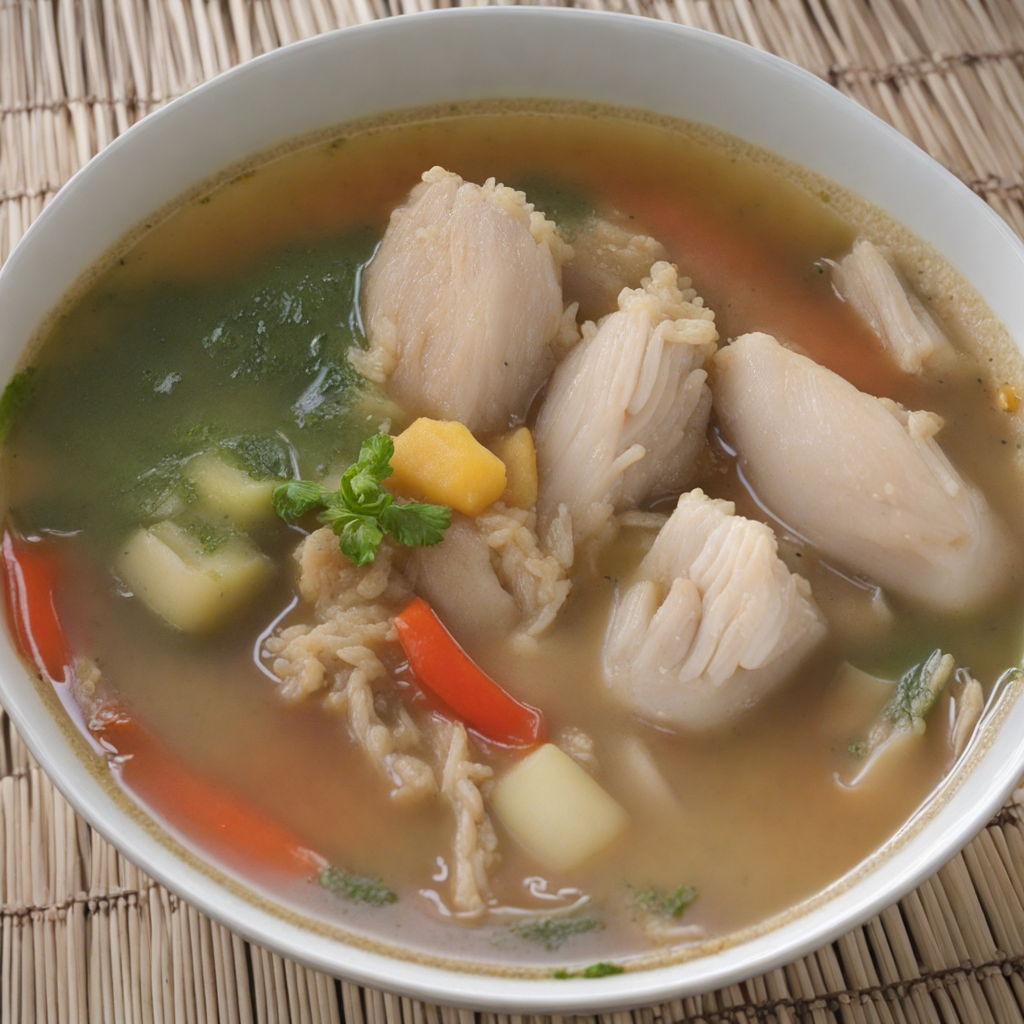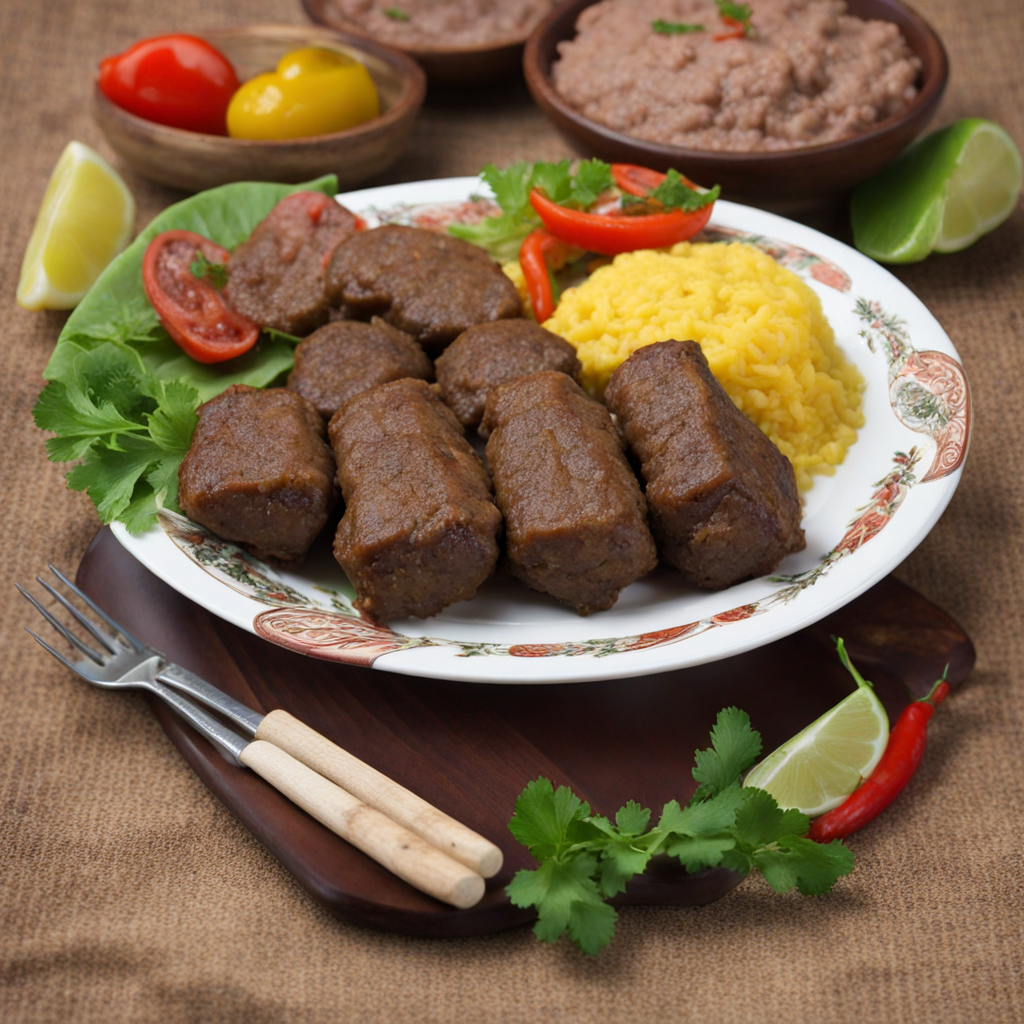Fiadoe
Fiadoe is a delightful Surinamese dish that embodies the vibrant flavors and rich culinary heritage of the region. This unique meal primarily features a base of rice, which is often complemented by a medley of protein options, including marinated chicken, shrimp, or even beef. The proteins are typically simmered in a fragrant blend of spices, incorporating traditional ingredients such as garlic, onion, and a variety of local herbs. The result is a hearty and satisfying dish that captures the essence of Surinamese home cooking, offering a comforting and flavorful experience with every bite. What sets Fiadoe apart is its distinctive sauce, often made from a combination of coconut milk, tomatoes, and a touch of heat from chili peppers. This sauce infuses the dish with a creamy texture and a subtly spicy kick that perfectly balances the richness of the proteins. Many variations of Fiadoe also include vegetables like bell peppers, carrots, and green beans, adding both color and nutrition to the dish. The combination of ingredients creates a symphony of flavors that dance on the palate, making it a must-try for anyone looking to explore new culinary landscapes. Fiadoe is typically served with a side of fried plantains or a fresh salad, enhancing the meal with additional textures and tastes. The contrast of the crispy plantains against the tender rice and savory sauce elevates the dining experience, making it not just a meal but a celebration of Surinamese culture. Whether enjoyed at a family gathering or a local eatery, Fiadoe promises an unforgettable taste adventure, inviting food lovers to dive into the heart of Suriname's diverse and delicious cuisine.
How It Became This Dish
Fiadoe: A Culinary Gem of Suriname Suriname, a small but culturally rich country on the northeastern coast of South America, boasts a unique tapestry of influences reflecting its indigenous heritage, colonial past, and the diverse backgrounds of its inhabitants. Among the many culinary delights that emerge from this vibrant nation, Fiadoe stands out not just as a dish, but as a symbol of the intricate blend of cultures that characterize Surinamese cuisine. Origins of Fiadoe Fiadoe, often described as a type of rice and meat dish, has roots that trace back to the indigenous peoples of Suriname, specifically the Arawak and Carib tribes. These communities had a deep connection to the land, utilizing local ingredients such as cassava, fish, and wild game to create nourishing meals. The use of rice, however, reflects the influence of colonial powers, particularly the Dutch, who brought rice cultivation to the region in the 17th century. The dish is typically made with rice, often mixed with meat (commonly chicken or beef), vegetables, and a variety of seasonings, including garlic, onions, and local spices. Some versions may include coconut milk, which adds a rich creaminess to the dish, drawing from the culinary practices of Afro-Surinamese and Creole communities. The combination of ingredients showcases the adaptability and resourcefulness of the Surinamese people, who have historically blended different culinary traditions to create something uniquely their own. Cultural Significance Fiadoe is more than just a meal; it carries significant cultural weight in Suriname. It is often prepared during communal gatherings, celebrations, and family events, serving as a reminder of the importance of togetherness and shared heritage. In a country that is home to multiple ethnic groups, including Creole, Indian, Javanese, Chinese, and indigenous populations, Fiadoe acts as a culinary bridge, bringing people together around a shared table. The preparation of Fiadoe is often a communal effort, with families and friends gathering to cook and share stories. This reflects the broader Surinamese cultural practice of communal eating, where meals are enjoyed together, fostering a sense of belonging and community. In this way, Fiadoe is not just about sustenance but also about nurturing relationships and preserving cultural traditions. Evolution Over Time The evolution of Fiadoe mirrors the dynamic history of Suriname itself. During the colonial period, the introduction of African slaves brought new culinary traditions and ingredients, which were integrated into local recipes. The influence of these communities is evident in the seasoning and preparation methods used in Fiadoe, which often highlight bold flavors and diverse ingredients. As Suriname moved through the 19th and 20th centuries, waves of immigrants from various parts of the world contributed to the culinary landscape. The arrival of East Indian indentured laborers in the 19th century introduced spices like cumin and coriander, which have since found their way into many Surinamese dishes, including Fiadoe. Similarly, the influx of Javanese immigrants added elements of their culinary practices, resulting in a fusion that is characteristic of modern Surinamese cuisine. In contemporary times, the globalization of food has also impacted how Fiadoe is prepared and perceived. While traditional methods remain cherished, many Surinamese cooks have begun to experiment with the dish, incorporating international flavors and techniques. Modern variations may include the use of quinoa instead of rice, or the addition of exotic vegetables sourced from local markets. This adaptability speaks to the resilience and creativity of Surinamese gastronomy, ensuring that Fiadoe continues to evolve while retaining its essence. Fiadoe in Modern Suriname In present-day Suriname, Fiadoe is a staple dish that can be found in homes, restaurants, and at festive occasions such as weddings, birthdays, and national holidays. Its versatility allows it to be served as a hearty meal or as a side dish, appealing to a wide range of tastes and preferences. Street vendors may offer their own interpretations, showcasing the dish's popularity among locals and tourists alike. Food festivals and cultural events in Suriname often feature Fiadoe as a highlight, celebrating not only the dish itself but also the rich culinary heritage it represents. Chefs and home cooks alike take pride in their unique recipes, often passed down through generations, each adding a personal touch to the traditional preparation. This emphasis on family recipes reinforces the cultural importance of Fiadoe, as it serves as a link to the past and a testament to the evolving nature of Surinamese cuisine. Conclusion Fiadoe is more than just a dish; it is a culinary narrative that encapsulates the history, diversity, and communal spirit of Suriname. Its origins reflect the country’s rich tapestry of cultures, while its evolution showcases the ability of Surinamese cuisine to adapt to changing times. As Fiadoe continues to be enjoyed by generations, it remains a symbol of unity, resilience, and cultural pride in a nation that thrives on its diversity. For those who have the opportunity to savor Fiadoe, they partake in not only a delicious meal but also a slice of Suriname’s vibrant history and a connection to its people. Through every bite, Fiadoe tells a story of tradition, transformation, and the enduring power of food to bring us together.
You may like
Discover local flavors from Suriname







